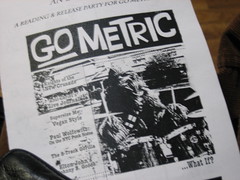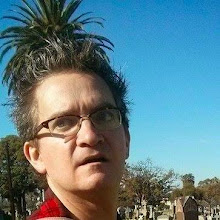Over the weekend, I finally got around to reading Neil Gaiman and Andy Kubert's
Marvel 1602. After finishing most of
Sandman, watching the BBC miniseries
Neverwhere, and reading his prose book
Good Omens, I felt the need to move on to other literary-clothed comics writers.

But after an email exchange with an acquaintance about our comics-reading habits, an exchange during which he asked me whether I'd read
1602, I realized that not only had I not, but I
wanted to -- almost immediately. So I placed an order for the trade paperback collection of the eight-issue series, which began publication in 2003. And while I had avoided it at the time because of Gaiman fatigue, I'm glad to have finally read it.
The TPB includes some bonus material, including a two-page introduction by Marvel's first archivist, a two-page afterword by Gaiman about how the series came to be, and script and sketchbook excerpts. The gambit of the book is clear: Marvel wanted to capitalize on some of the Gaiman mythos and mystique -- and Gaiman wanted a chance to revisit some of the Stan Lee, Jack Kirby, and Steve Ditko-era Marvel characters that first attracted him to comics. And readers who are worth their salt will seek out the series to take in Gaiman's reinterpretation of what might be America's best comic icons. At the same time, the 17th-century setting brings
Neal Stephenson's fiction to mind, particularly the Baroque Cycle.
While the series isn't quite on par with Gaiman's David Foster Wallace-dense
Sandman (early readers' biggest concern), there's plenty of near-real history worked into the work. And the repositioning of the characters is intriguing. Nick Fury and Dr. Strange loom large, and several other characters play important roles -- including the Angel, Daredevil, Thor, and, surprisingly, Captain America. Of the teams featured -- the X-Men and the Fantastic Four -- the latter resonates most strongly with the setting in time and place. And other characters are included in the book almost as afterthoughts. Nevertheless, the borderline cameos of Peter Parker and Bruce Banner still impress.
Of all of the icons included, however, Captain America plays the biggest role -- and best ties the piece into the rest of the Marvel Universe. Rather than go back to the future,
Marvel 1602 steps forward into the past. Think Alan Moore's
1963, Frank Miller's return to the Dark Knight, and perhaps even Moore's ABC books. If you haven't read it yet, it's worth checking out -- and made a nice precursor to my current read: George R.R. Martin's
A Game of Thrones, which is making me a renewed fan of fantasy fiction.
 Despite the 50% Going out of Business Sale, this news makes me sad. Outside of ye olde Blacklist Mailorder and the still-important Maximum Rock'n'Roll, the ever-in-limbo Factsheet 5, V. Vale's RE/Search Publications, and the absolutely mind-blowing Amok Dispatch series, few independent media enterprises have held my heart as closely as Loompanics.
Despite the 50% Going out of Business Sale, this news makes me sad. Outside of ye olde Blacklist Mailorder and the still-important Maximum Rock'n'Roll, the ever-in-limbo Factsheet 5, V. Vale's RE/Search Publications, and the absolutely mind-blowing Amok Dispatch series, few independent media enterprises have held my heart as closely as Loompanics.














